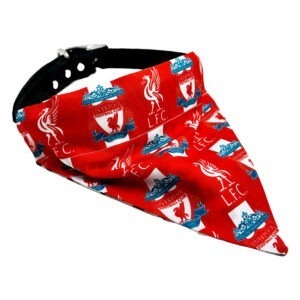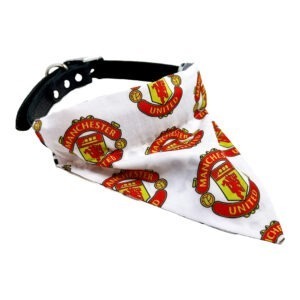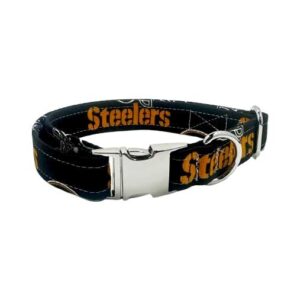The Havanese is a toy breed well-known for its playful personality, silky coat, and love of companionship. Originating from Cuba, these little dogs have won the hearts of pet owners worldwide, not only for their friendly disposition but also for their adaptability to various living conditions.
However, like every breed, Havanese have their unique needs, particularly when it comes to diet and exercise. Ensuring that your Havaneser receives the right nutrients and amount of physical activity is crucial for their overall health and well-being. It can help maintain an ideal weight, support organ function, enhance the quality of their coat, and even improve their life span.
This guide aims to provide comprehensive information about the best diet and exercise for a Havanese, helping you make informed choices for your pet’s care. Understanding the breed’s specific needs can greatly enhance the quality of life for your furry friend, ensuring they stay healthy, happy, and active throughout their lives.
Some of our latest products...
-
Hundebandanas
Liverpool FC Dog Bandana
$ 13.19 – $ 16.12 USD Optionen wählen Dieses Produkt weist mehrere Varianten auf. Die Optionen können auf der Produktseite gewählt werden -
Hundebandanas
Manchester City Dog Bandana
$ 13.19 – $ 16.12 USD Optionen wählen Dieses Produkt weist mehrere Varianten auf. Die Optionen können auf der Produktseite gewählt werden -
Hundebandanas
Manchester United Dog Bandana
$ 13.19 – $ 16.12 USD Optionen wählen Dieses Produkt weist mehrere Varianten auf. Die Optionen können auf der Produktseite gewählt werden -
Hundehalsbänder
Pittsburgh Steelers Dog Collar
$ 20.52 USD Optionen wählen Dieses Produkt weist mehrere Varianten auf. Die Optionen können auf der Produktseite gewählt werden
Understanding the Dietary Needs of a Havanese
The Havanese, although a small breed, has specific nutritional requirements to ensure a balanced and healthy life. They require a diet rich in protein to support muscle development and maintenance. The best sources of protein come from meats such as chicken, beef, fish, and turkey.
Carbohydrates are also important for energy. However, it’s crucial to focus on complex carbs, such as sweet potatoes, peas, and brown rice, rather than simple sugars. Healthy fats, mainly sourced from fish oil and flaxseed, provide essential omega-3 and omega-6 fatty acids which contribute to a shiny coat and healthy skin.
Havanese also need specific vitamins and minerals to promote good health. For instance, calcium is essential for strong bones and teeth, while vitamins A and E support the immune system and eye health, respectively.
In terms of commercial dog food, opt for high-quality brands that list real meat as the first ingredient and avoid those with artificial additives or fillers like corn, wheat, or soy. Some suitable options include Royal Canin’s Havanese specific formula or Blue Buffalo’s small breed formula.
For those interested in preparing homemade meals, consider consulting a vet or pet nutritionist to ensure that the diet meets all the essential nutritional requirements of a Havanese. A popular recipe may include lean meat, vegetables like carrots and broccoli, some rice for carbohydrates, and a dash of fish oil for healthy fats.
Remember, the dietary needs of a Havanese change with age. Puppies, with their high energy levels, require more protein and calories. Adults require a balanced diet, while seniors might need fewer calories but more fiber and joint-supporting supplements. Regular vet check-ups will help adjust your dog’s diet according to their life stage and specific needs.
By understanding and meeting the dietary needs of your Havanese, you’re taking a crucial step towards ensuring their health, vitality, and happiness.
Exercise Needs for a Havanese
While the Havanese is not a hyperactive breed, regular exercise is still crucial to maintain their health, prevent obesity, and keep them mentally stimulated. They typically require around 30 minutes to an hour of daily routine. This can be split into several short walks, play sessions, or a combination of both.
Suitable exercises vary depending on the dog’s age. Puppies have a lot of energy and can benefit from several short play sessions throughout the day. This can involve playing with toys, exploring new environments, or simple obedience training to help them burn energy while also learning new commands. However, it’s essential to ensure that the exercise isn’t too strenuous for their developing bodies.
For adult Havanese, a balance between physical exercise and mental stimulation works best. This could mean regular walks and games of fetch, coupled with puzzle toys or training exercises that make them think. Remember, Havanese are intelligent and curious, so varying their activities can prevent boredom and promote mental well-being.
Senior Havanese may become less active, but they still benefit from gentle, consistent exercise. This can be light walks or a gentle play session, with focus on keeping them mobile and engaged without putting too much stress on their joints.
Mental stimulation plays a vital role in the overall well-being of a Havanese. Interactive toys, puzzle feeders, and obedience training are excellent ways to keep their minds sharp.
Exercise equipment like harnesses for comfortable walks, chewable toys for playful exercise, and interactive toys for mental stimulation can be beneficial. Always remember to supervise your dog during play to avoid accidents.
Regular exercise and mental stimulation can greatly contribute to your Havanese’s physical health, mental alertness, and overall happiness. A well-exercised dog is often a well-behaved and content one.
Common Health Issues in Havanese
Like all dog breeds, Havanese are susceptible to certain health issues. By understanding these potential conditions, you can take preventative measures and seek early treatment to keep your Havanese in top shape. Some common health issues include:
- Hüftdysplasie: This is a genetic condition where the hip joint doesn’t develop properly, leading to potential arthritis or even lameness. A balanced diet, regular exercise, and maintaining a healthy weight can help manage this condition.
- Patellar Luxation: This involves the dislocation of the kneecap, which can cause pain and mobility issues. Regular, low-impact exercise can help keep the joints healthy and flexible.
- Eye Disorders: Havanese can be prone to a variety of eye conditions such as cataracts and progressive retinal atrophy (PRA). Regular check-ups can help catch these conditions early and preserve your dog’s vision.
- Allergien: Havanese can be susceptible to both food and environmental allergies. If you notice symptoms like itching, redness, or gastrointestinal issues, it’s important to consult your vet to identify the cause and adjust your dog’s diet or environment accordingly.
- Heart Murmurs: These are extra or unusual sounds heard during a heartbeat. Some heart murmurs are innocent, but others can indicate heart disease. Regular vet check-ups and a balanced diet can help manage this condition.
The impact of diet and exercise on these health issues cannot be overstated. Regular exercise helps to maintain a healthy weight, reducing the strain on joints and the risk of hip dysplasia and patellar luxation. A balanced diet rich in antioxidants can boost the immune system and help protect against many health issues.
Regular vet check-ups are crucial in the early detection and management of these health conditions. Additionally, they provide an opportunity to keep vaccinations up to date, which protects against a range of diseases.
Keeping your Havanese healthy involves a proactive approach – a balanced diet, regular exercise, and routine vet visits are key components to ensure your furry friend leads a happy, healthy life.
Neutering/Spaying and Its Impact on a Havanese’s Health
Neutering (for males) or spaying (for females) is a surgical procedure performed by veterinarians to prevent dogs from reproducing. While the decision to neuter or spay your Havanese is a personal one, it’s crucial to understand the potential health benefits and risks associated with these procedures.
Pros of Neutering/Spaying
- Behavioral Improvements: Neutering can reduce aggressive or territorial behavior in males, while spaying can prevent the heat cycle in females, which can often lead to changes in behavior and unwanted attention from male dogs.
- Health Benefits: Spaying helps prevent uterine infections and breast tumors, which are malignant in about 50 percent of dogs. Neutering your male Havanese can prevent testicular cancer and certain prostate problems.
- Population Control: The overpopulation of dogs is a significant issue. Spaying or neutering your Havanese contributes to controlling the dog population and reduces the number of dogs in shelters.
Cons of Neutering/Spaying
- Surgical and Anesthetic Risks: As with any surgical procedure, there are risks involved, including adverse reactions to anesthesia. However, these risks are low with modern veterinary medicine.
- Weight Gain: Neutered or spayed dogs can be more prone to weight gain. However, with a well-managed diet and regular exercise, this can be effectively controlled.
- Risk of Certain Health Issues: Some studies suggest that spayed or neutered dogs may have slightly increased risks of certain health issues, such as orthopedic disorders or specific types of cancer. However, these risks are relatively low compared to the benefits.
The ideal age for neutering or spaying a Havanese is typically around six months, but it can depend on several factors, including the dog’s health and size. It’s essential to discuss this with your vet to make the best decision for your pet.
In conclusion, while neutering or spaying your Havanese has pros and cons, the benefits often outweigh the risks. However, it’s crucial to make an informed decision based on your dog’s specific needs, your lifestyle, and professional advice from your vet.
Fallstudien
In this section, we’ll hear directly from Havanese owners about their experiences with diet and exercise. Their stories offer insights into the real-world application of the information presented thus far.
Case Study 1: Daisy’s Weight Loss Journey
When Daisy, a four-year-old Havanese, began to gain weight, her owner, Sarah, was concerned. Despite feeding Daisy the recommended portions of a reputable dog food brand, the pounds kept piling on. Sarah consulted with a vet, who suggested a diet with fewer carbs and more protein. The vet also encouraged Sarah to increase Daisy’s exercise. Sarah began a new routine of daily walks and games of fetch. Within six months, Daisy had returned to a healthy weight. Sarah learned that even small changes in a Havanese diet and exercise regime could make a significant difference.
Case Study 2: Max’s Homemade Diet
Max, a seven-year-old Havanese, suffered from regular bouts of stomach upset. His owner, Richard, tried different dog foods, but nothing seemed to ease Max’s digestive issues. After consulting with a vet, Richard decided to try a homemade diet. He learned to prepare balanced, nutritious meals for Max using simple ingredients like chicken, rice, and vegetables. The change in Max’s health was remarkable, his digestive issues cleared, and he seemed more energetic and happier. Richard’s experience shows the potential benefits of a homemade diet for a Havanese with specific dietary needs.
Case Study 3: Bella’s Exercise Routine
Bella, a lively two-year-old Havanese, had bundles of energy. Her owner, Amelia, was initially overwhelmed, as Bella seemed to need more exercise than she could provide. Amelia consulted a dog trainer who suggested incorporating mental stimulation into Bella’s exercise routine. Amelia began using puzzle toys during playtime and practicing new tricks with Bella. The additional mental stimulation made a noticeable difference. Bella was calmer and more content. Amelia’s experience highlights the importance of mental stimulation for a Havanese exercise routine.
These case studies show how individualized the approach to diet and exercise needs to be for Havanese. While there are general guidelines to follow, each dog is unique and may require modifications to their diet and exercise routine.
Fazit
This article has journeyed through the world of diet and exercise needs for a Havanese, from understanding their specific dietary requirements to outlining an effective exercise regime. These small, sturdy dogs, full of character and charm, have unique needs that must be met for them to thrive.
A balanced diet that satisfies a Havanese’s nutritional needs is crucial. Whether you opt for high-quality commercial dog food or nutritious homemade meals, the most important thing is ensuring the food supports their health at every life stage.
Equally significant is an appropriate exercise regime. Daily physical activities and mental stimulation are essential for the well-being of these active and intelligent dogs. Customizing the activities to match their life stage and health condition will guarantee they are engaged and happy.
Health considerations such as common health issues, the impact of neutering/spaying, and regular vet check-ups are paramount. These aspects help to preempt, manage, and treat health issues, further enhancing the Havanese’s quality of life.
The testimonials underscore the variety of approaches that owners can take, highlighting the importance of personalizing the diet and exercise needs of a Havanese. Ultimately, the goal is a healthy, happy pet, and the path to achieving that may vary from one Havanese to another.
As owners, we bear the responsibility of ensuring our pets lead healthy lives. Their health and happiness significantly depend on the choices we make regarding their diet and exercise. Let’s celebrate the joy our Havanese bring into our lives by providing the best care possible.
Remember, when in doubt, always consult with a veterinarian or a pet nutrition expert. They can offer personalized advice that takes into account your Havanese’s age, weight, health status, and lifestyle. After all, the best diet and exercise regimen is the one that’s specifically tailored to your dog.
Verweise
Throughout this article, we’ve compiled information from various reputable sources to provide a comprehensive guide on the diet and exercise needs of a Havanese. Here are the references used:
- American Kennel Club. (2020). Havanese Dog Breed Information. Retrieved from www.akc.org/dog-breeds/havanese/.
- Havanese Club of America. (2019). Feeding Your Havanese. Retrieved from www.havaneseclubofamerica.org/your-new-havanese/feeding-your-havanese.
- Roberts, M., & Roberts, J. (2021). The Happy Puppy Handbook: Your Definitive Guide to Puppy Care and Early Training. Penguin.
- Canine Journal. (2020). Best Dog Food: Reviews of the Top Brands and Recipes. Retrieved from www.caninejournal.com/best-dog-food/.
- PetMD. (2019). How Much Exercise Does a Dog Need Every Day? Retrieved from www.petmd.com/dog/wellness/evr_dg_exercise_for_dogs.
- The Veterinary Expert. (2019). Neutering Dogs: Including the use of Suprelorin dog contraceptive (Neutering) implants. Retrieved from www.veterinaryexpert.com/neutering/neutering-dogs/.
- The Veterinary Clinics of North America. Small Animal Practice. (2021). Exercise for dogs. Retrieved from www.ncbi.nlm.nih.gov/books/NBK531478/.
- BlogPaws. (2021). 5 DIY Recipes for Dogs Suffering from Liver Disease. Retrieved from www.blogpaws.com/executive-blog/diy-recipes-for-dogs-suffering-from-liver-disease.
These sources offer a wealth of information on the Havanese diet and exercise needs. For more detailed or personalized advice, consult with a veterinary or pet nutrition expert.
Häufig gestellte Fragen
What’s the ideal weight for a healthy Havanese?
The weight of a healthy Havanese can vary based on its size and bone structure. On average, a healthy Havanese adult dog should weigh between 7 and 13 pounds. However, it’s always best to consult with your vet, who can provide guidance based on your dog’s unique physical characteristics and health conditions.
How many meals a day should my Havanese have?
Puppies require more meals a day, typically three to four. However, once your Havanese reaches adulthood, it’s recommended to reduce meal frequency to two meals per day.
How much exercise does a Havanese need?
While Havanese dogs are not as high energy as some breeds, they still require regular exercise to maintain a healthy weight and overall good health. Aim for at least 30 to 60 minutes of exercise per day.
Can Havanese dogs eat human food?
While some human foods are safe for dogs, others can be toxic. Always research or consult with a vet before giving your Havanese any human food. When it comes to feeding your Havanese, it’s usually best to stick with dog food that’s specially formulated to meet their nutritional needs.
Do Havanese dogs need mental stimulation?
Yes, mental stimulation is crucial for Havanese dogs. They’re a smart breed and enjoy activities that challenge them mentally. Try incorporating puzzle toys and interactive games into your Havanese’s routine.
Remember, each Havanese is unique, and what works for one may not work for another. Always consult with a vet or a pet nutrition expert for personalized advice.





